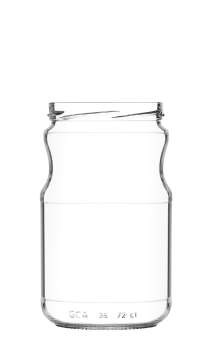From Raw Material to Glass Packaging: A Long and Joyful Journey
As we look around today, we see the windows of every house, the glass of cars, numerous accessories we see while sitting at home or outdoors, the food and beverage packaging we use, and many other products, all of which rely on the production and evolution of glass. It's not hard to recognize that many of these products are made of glass; however, how well do we understand the production process of glass packaging?
Learning how glass packaging is produced from the raw material stage and transformed into the final product is quite an interesting and informative process. Here is this long and delightful journey of glass from raw material to glass packaging:
Preparation of Raw Materials
The raw material preparation stage is one of the most critical phases of glass production. The processes carried out at this stage directly affect the quality and characteristics of the glass. In the glass industry, basic raw materials include sand, soda, dolomite, limestone, feldspar, sodium sulfate, and others. Silica sand is typically used as the main component in glass production. This sand contains silicon dioxide (SiO2). Other components of glass, such as soda ash (sodium carbonate) and limestone (calcium carbonate), must also be prepared. The correct proportioning of raw materials is a factor that determines the properties of the glass. Therefore, the raw materials, weighed according to the glass composition, are transferred to the mixer unit to obtain a homogeneous mixture. At this stage, the homogeneously mixed raw materials are sent to the furnace for the melting process.
Melting and Shaping
Melting is the process of converting a substance from solid to liquid state. The fundamental task of glass melting furnaces is to melt the blend, which is formed by mixing the raw materials with proper physical and chemical properties, at high temperatures (1400-1600 °C) and then supply it to the forming machines. As a result of various physical and chemical reactions that occur at these high temperatures, the raw materials become molten glass. The molten glass is then removed from the furnace and directly poured into molds to be formed. As these machines form the molten glass, products such as bottles and jars are produced.
Cooling and Hardening
In the previous stage, the glass in its fluid state is poured into molds, and in this stage, it is gradually left to cool to take shape. This process allows the molecules within the glass to organize and stabilize. Proper cooling is essential to prevent the formation of internal stresses and cracks in the glass. This step is also critical in determining the quality of the glass.
Inspection and Quality Control
At this stage, the quality and suitability of the produced glass are inspected. The inspection and quality control phase focuses on criteria such as the smoothness of the glass, thickness, optical and other properties. High-quality and safe glasses that pass this step are now ready for use and set out to meet consumers.

04.04.2024







